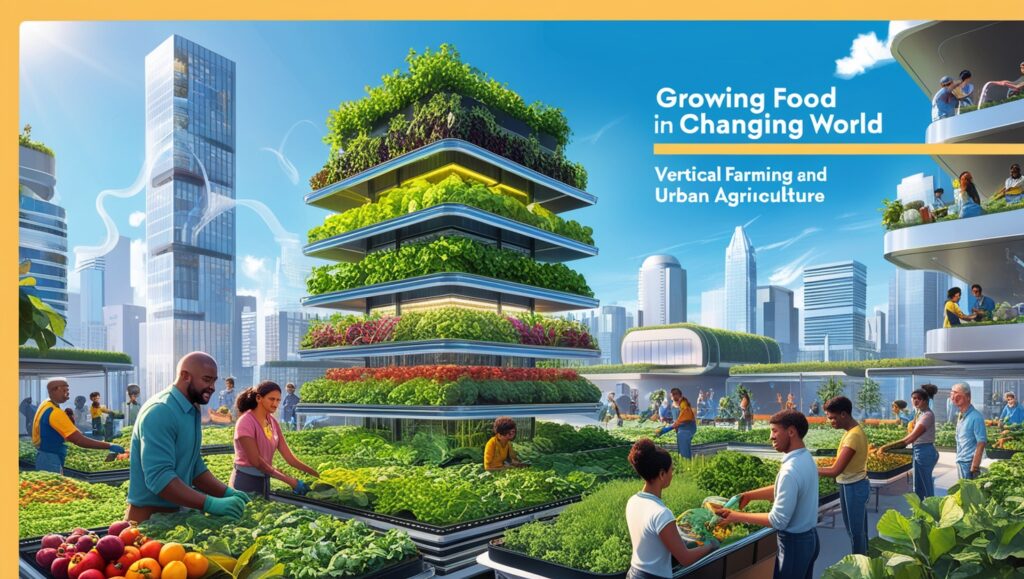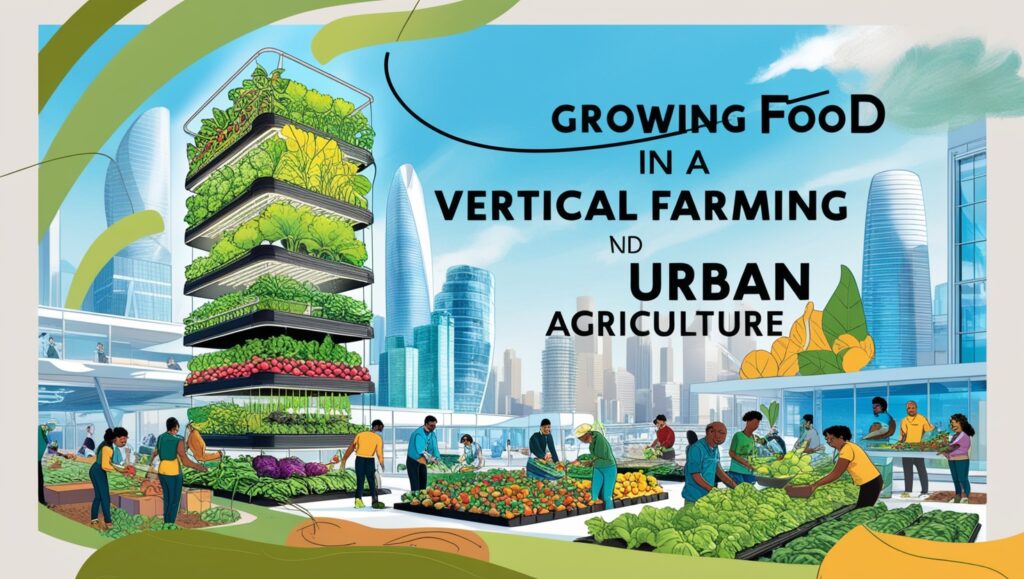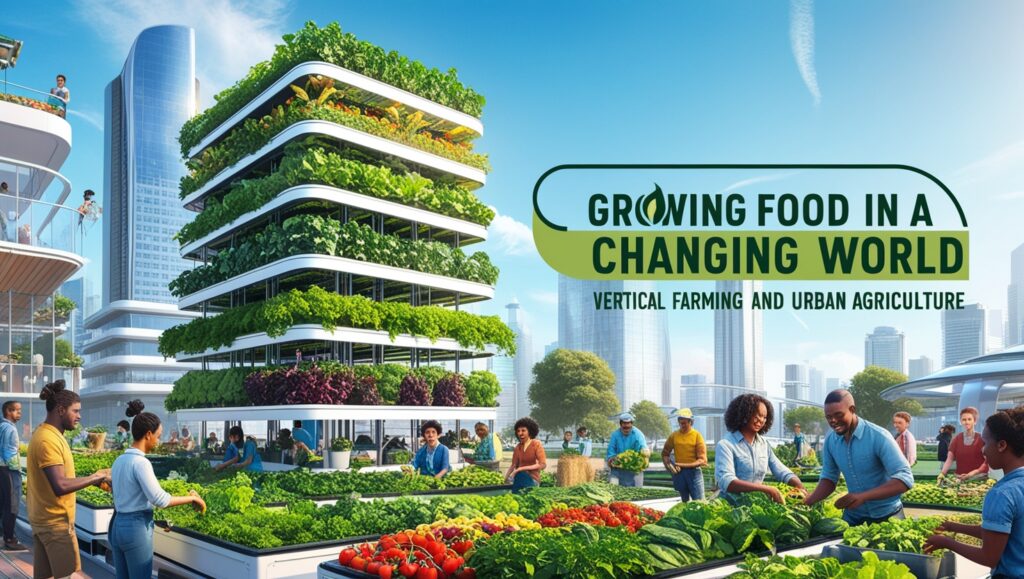Vertical Farming and Urban Agriculture: Growing Food in a Changing World

As urban populations grow and arable land becomes increasingly scarce, traditional farming faces significant challenges in meeting global food demands. Vertical farming and urban agriculture offer innovative solutions by bringing food production closer to cities, maximizing efficiency, and minimizing environmental impact.
What is Vertical Farming?
Vertical farming is the practice of growing crops in vertically stacked layers, often in controlled indoor environments. Utilizing hydroponics, aeroponics, or aquaponics, these systems produce high yields in small spaces, making them ideal for urban settings.
What is Urban Agriculture?
Urban agriculture encompasses a range of food production activities in urban areas, including rooftop gardens, community farms, and small-scale indoor systems. It connects city dwellers to food production while addressing food security and sustainability.
Key Features of Vertical Farming
- Soilless Farming Methods:
- Hydroponics: Growing plants in nutrient-rich water.
- Aeroponics: Misting plant roots with nutrients.
- Aquaponics: Combining fish farming with plant cultivation, where fish waste provides natural fertilizer.
- LED Lighting Technology:
LED lights mimic natural sunlight, allowing year-round crop production in spaces without access to natural light. - Climate Control:
Indoor farms use sensors and AI to maintain optimal temperature, humidity, and CO₂ levels, ensuring maximum productivity. - Water Efficiency:
Vertical farming uses up to 90% less water than traditional agriculture through recycling systems.

Benefits of Vertical Farming and Urban Agriculture
- Space Efficiency:
Vertical farms can grow more food per square foot than conventional farms, making them ideal for densely populated cities. - Reduced Transportation:
Growing food closer to consumers cuts down on transportation emissions and ensures fresher produce. - Resource Conservation:
Water recycling, efficient energy use, and minimal land requirements make vertical farming eco-friendly. - Resilience to Climate Change:
Indoor farms are unaffected by weather extremes, ensuring reliable food production. - Local Food Security:
Urban agriculture empowers communities to grow their own food, reducing dependence on distant supply chains.
Challenges to Scaling Up
- High Initial Costs:
Setting up vertical farms requires significant investment in infrastructure and technology. - Energy Consumption:
Although efficient, artificial lighting and climate control systems can lead to high energy usage. Renewable energy solutions can mitigate this. - Technical Expertise:
Operating these systems demands skilled workers and ongoing training.
Real-World Success Stories
- Vertical Farming:
- AeroFarms (USA): Producing greens in abandoned warehouses using aeroponic technology.
- Spread (Japan): Automated vertical farms producing over 10 million heads of lettuce annually.
- Urban Agriculture:
- Havana (Cuba): Urban farms supplying fresh produce to local communities.
- Rooftop Gardens (Singapore): Skyscrapers host lush gardens, providing fresh vegetables to city residents.
The Future of Urban Food Production
Vertical farming and urban agriculture are more than just trends—they represent a shift in how humanity approaches food security. By integrating these practices into urban planning, cities can ensure sustainable, localized, and resilient food systems.
As the world faces the twin challenges of feeding a growing population and protecting the environment, vertical farming and urban agriculture stand as innovative solutions for a brighter, greener future.







